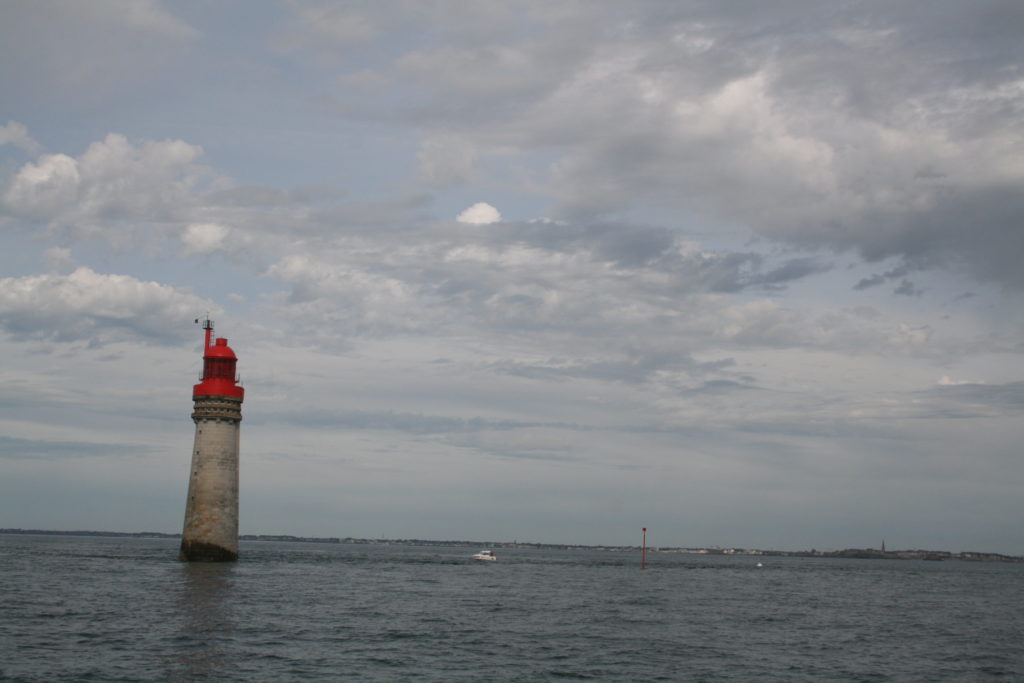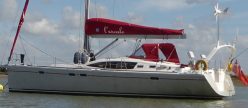Sunday 2 – Monday 3 June
We awoke to a hazy mist that thickened to fog as we set off just before 0800. There was enough wind to set the full mainsail and genoa, and we sailed ‘blind’, grateful for radar and AIS on the chart plotter, for most of the morning. We made steady progress in spite of light and variable winds, and by mid-afternoon when the tide turned we enjoyed speeds six knots and more.

As we swung into St Malo harbour in the evening light, we received no response on calling the lock keeper to request an opening, so we decided the alternative, out-of-town marina would probably be cheaper, and rafted neatly onto a charter yacht in Bas des Sablons. The following day we learned the error of our judgement, when we met a brand new Allures 45.9, Wireless, in the Intra Muros harbour on the edge of the old walled city of St Malo, whose crew informed us their berthing fee was €10 a night less than ours, and with better facilities. They kindly invited us for a look aboard, and it was interesting to see the evolvement of the model ‘in the flesh’, after talking about it so enthusiastically, never having actually seen one, at Southampton Boat Show back in September 2016.

We continued our cycle ride around the bumpy cobbled streets of the lovely (rebuilt) mediæval city, treating ourselves to a first taste of French cuisine with a pain au chocolat. Just as well, as there wasn’t food shopping to be found.
Reluctant to spend another expensive night in the marina, and having seen what we wanted to of St Malo, it seemed a good idea to investigate an anchorage just West of the city port, so at a time when most boats are glad to be coming into harbour, we set off towards the sunset in a poor choice of clothing for the conditions. Some three hours later we finally dropped the anchor off the Ile de Hebihens, not entirely sheltered from the swell. Mate prefers to tuck right into shore, but this is not possible in areas of huge tides, as we’d potentially find ourselves beached at the end of the necessary length of scope when the tide drops. Yes, our lifting centreboard means this is theoretically possible, but we would never choose to take the ground without first having prospected at low water to check for debris, rocks and angle of slope.
